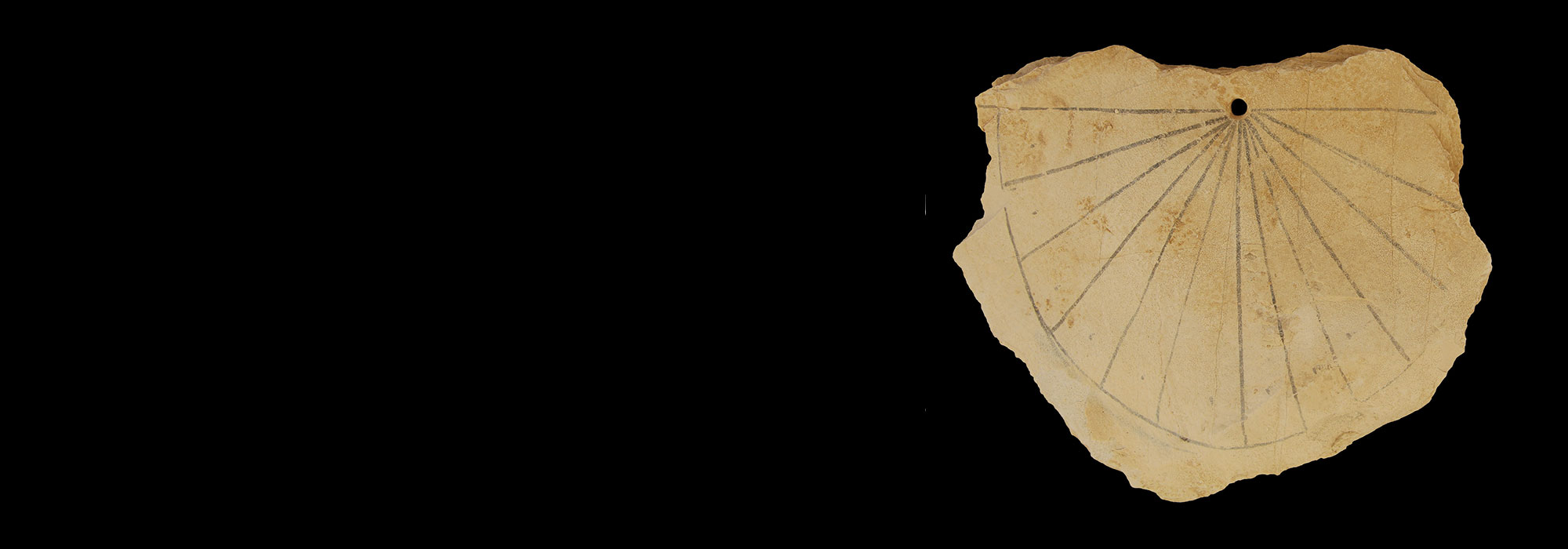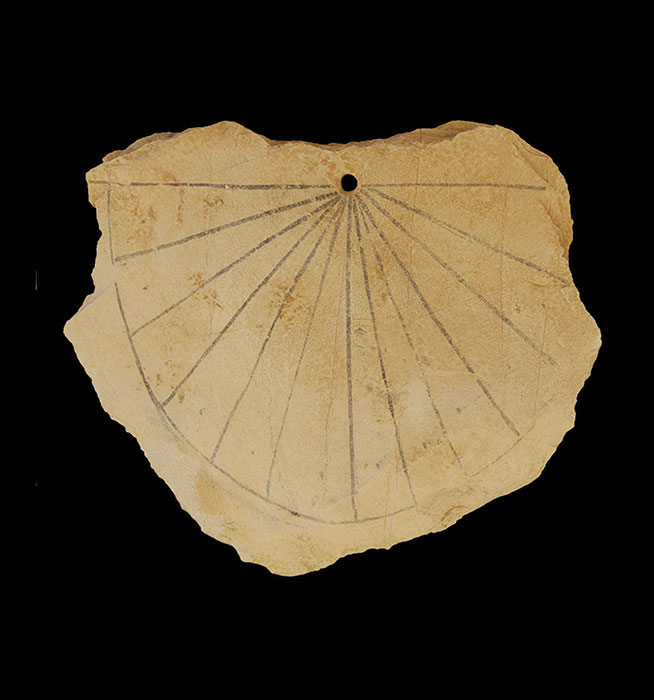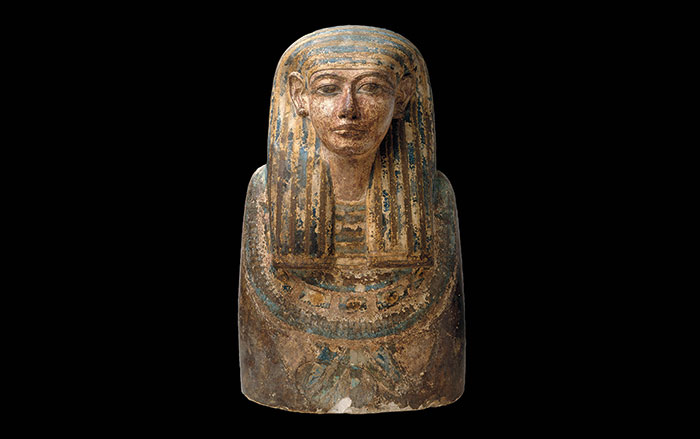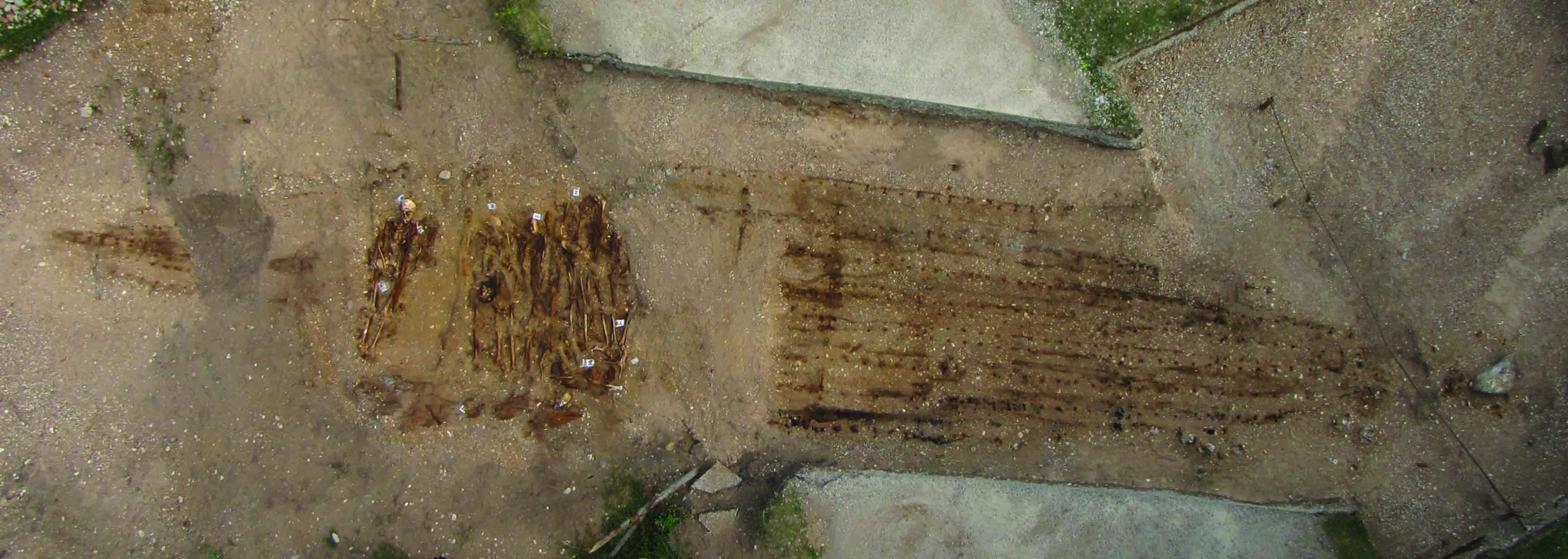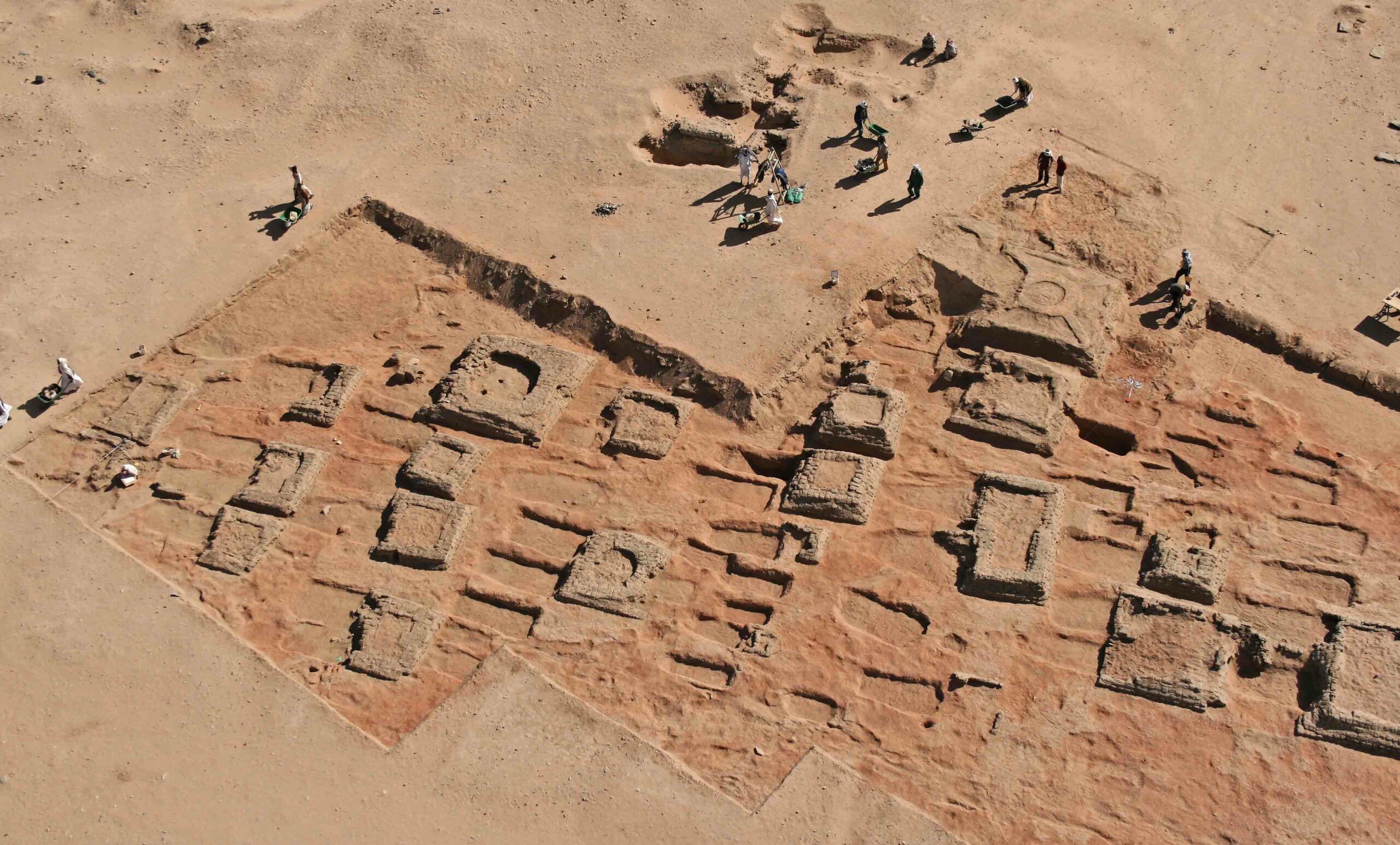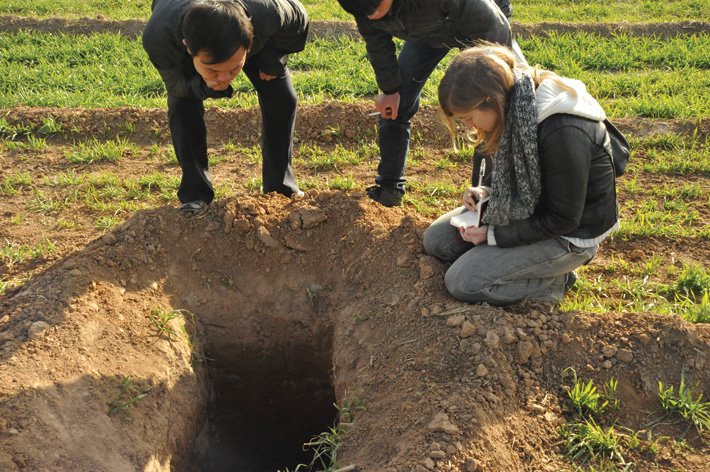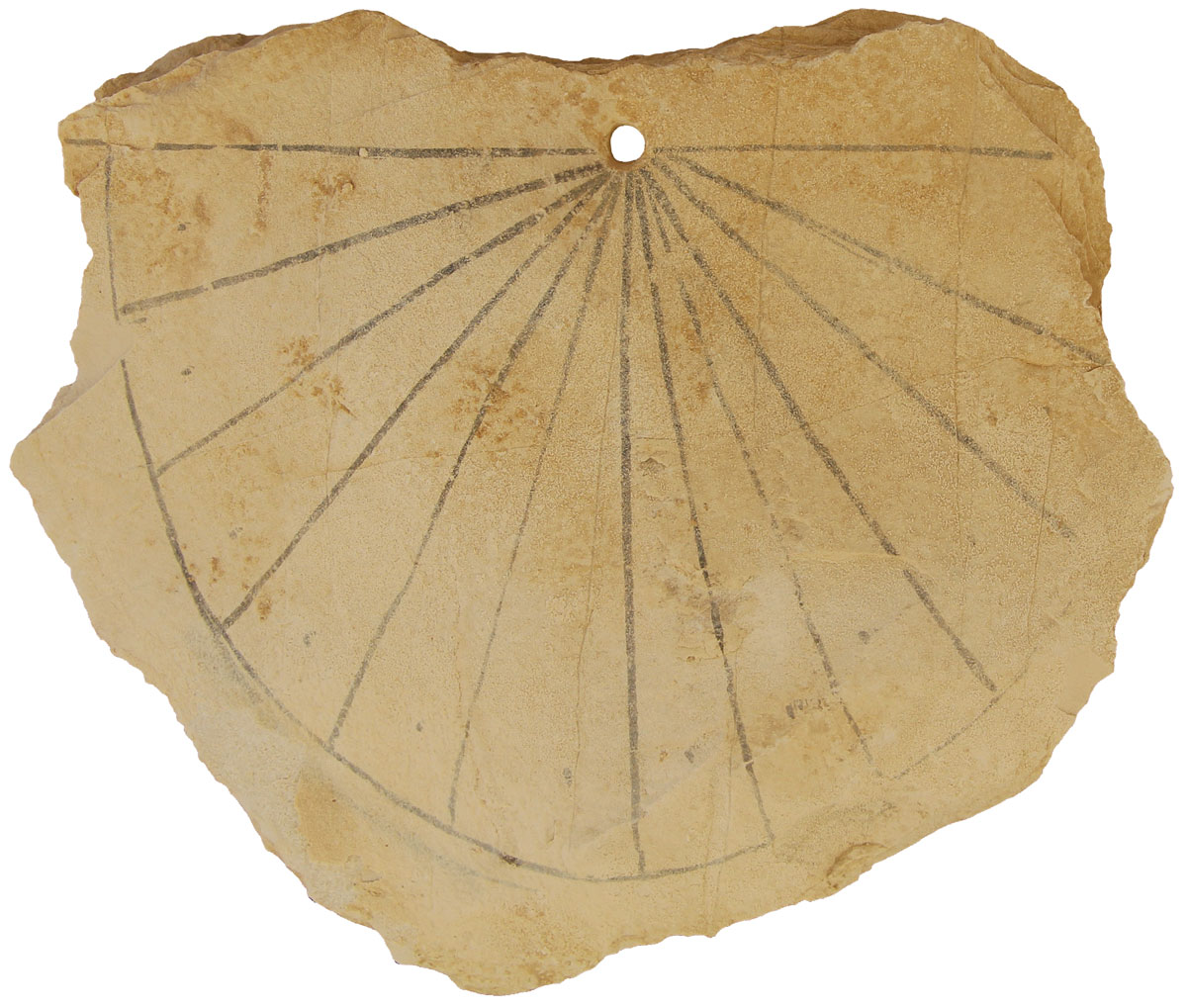
What is it?
Sundial
Material
Limestone inscribed with black ink
Culture
Egypt, 19th Dynasty
Date
19th Dynasty, 13th century B.C.
Dimensions
7 in wide, 6 in tall, 1.3 in thick
Found
Valley of the Kings, Egypt
Recording the passage of time is a fundamental human activity, whether by turning the pages of a calendar, following the sweep of a watch’s second hand, or measuring the time it takes for the sun to complete its arc. Almost 3,500 years ago, men working in the Valley of the Kings, the burial ground for ancient Egypt’s pharaohs and nobility, made a small sundial using a chip of discarded limestone to mark their days. Uncovered by archaeologist Susanne Bickel of the University of Basel in an area where workmen of the 19th Dynasty rested after laboring in the royal tombs, the sundial is one of the earliest such devices ever found in Egypt. Although the men made many drawings in their leisure time—the team even found an image of Ptah, the god of craftsmen and architects—this is the only sundial among the thousands of these chips that have been found.
After marking 12 even spaces on the chip, the workmen fixed a wooden or metal stick into the hole at the top to cast a shadow and measure the sun’s progression. Until recently, it was thought that this type of sundial only became common in the Greco-Roman period, at least 1,000 years later. However, Bickel suggests that the discovery of the Valley of the Kings sundial should inspire researchers to reexamine some of the previously known examples anew. And as to why the men created a sundial, Bickel says, “Perhaps the men regulated their work time with the device, or it may relate in some way to the decoration of the royal tombs where the sun’s nightly journey is depicted as structured around a 12-hour system. For now, we can only guess.”


